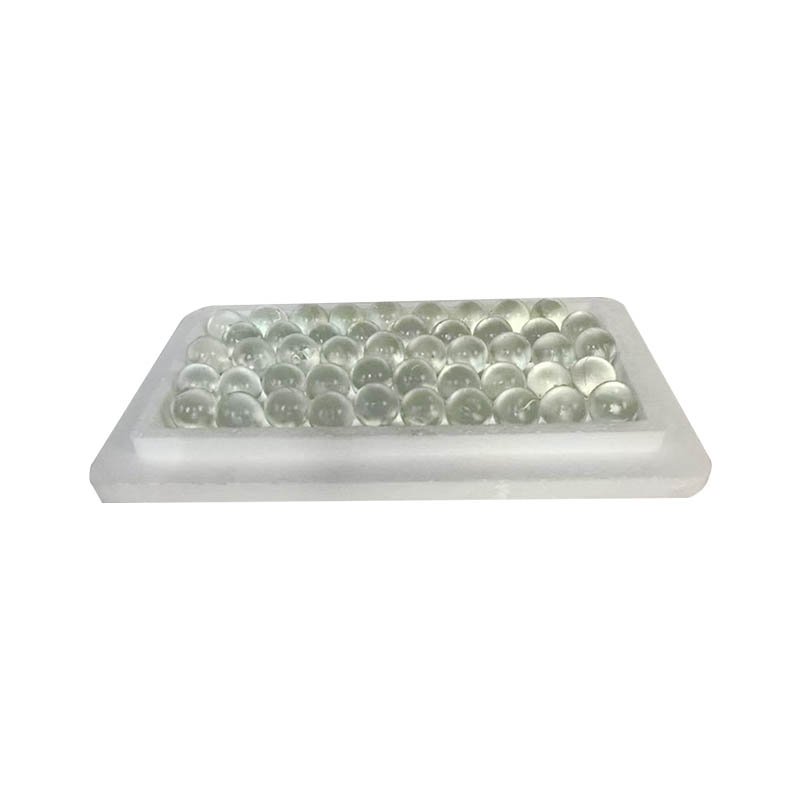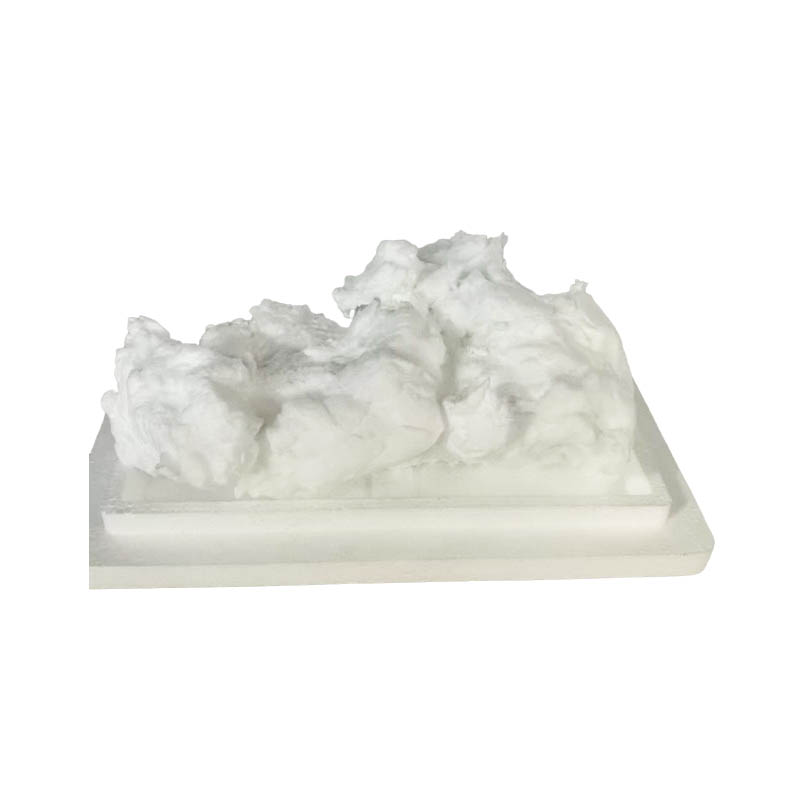In the field of high-efficiency air filtration, what critical role do glass balls play in the dust holding capacity of filter paper?
Release Time : 2025-10-11
In high-efficiency air filtration technology, the performance of the filter material directly determines the purification efficiency and service life of the entire system. High-efficiency air filter paper, primarily composed of glass microfibers, is widely used in medical, semiconductor, biological laboratories, and cleanrooms, where air quality requirements are extremely high. One of the core raw materials for this type of filter paper is the specialized glass balls used to produce the glass microfibers. Although glass balls are the starting material, they have a profound impact on the dust holding capacity of the final filter paper. Dust holding capacity refers to the total amount of dust that a filter material can hold before reaching a specified resistance, and is an important indicator of filter life and economic efficiency.
First, the chemical composition of the glass balls directly determines the physical properties of the resulting glass microfibers. High-quality specialized glass balls are typically made from high-purity silica, with strictly controlled impurity levels such as iron, sodium, and calcium. This high-purity formula ensures excellent fiber-forming properties after molten glass, enabling the production of finer, more uniformly distributed microfibers. Finer fibers create a denser fiber network per unit mass, resulting in a richer pore structure. This multi-layered, high-porosity, three-dimensional network structure not only improves the efficiency of intercepting tiny particles but also provides more space for dust to settle, significantly increasing dust holding capacity. Conversely, excessive impurities in the glass balls can lead to uneven fiber thickness or even breakage, resulting in structural defects in the filter layer and reduced dust holding capacity.
Secondly, the stability of the glass balls' melting and drawing processes is crucial to the uniformity of the filter paper's pore structure. Specialized glass balls undergo precise proportioning and homogenization, resulting in stable softening points and viscosity curves, maintaining excellent fluidity during high-temperature melting. This enables the consistent production of ultrafine glass fibers with diameters ranging from a few tenths of a micron to several microns using flame spray or centrifugal drawing processes. These fibers are randomly stacked to form numerous micron- and submicron-sized pores, creating a highly efficient "deep filtration" structure. Dust particles are not only intercepted on the surface but also deposited layer by layer within the fiber network, slowing the increase in resistance and extending the filter's service life. This advantage is premised on the glass balls' highly consistent thermal properties.
Furthermore, the particle size and surface condition of glass balls indirectly affect fiber formation efficiency and the weight distribution of filter paper. Glass balls with uniform particle size heat more uniformly in the furnace, resulting in a stable melting rate and contributing to continuous and efficient fiber production. Large variations in raw material particle size can easily lead to localized over-melting or under-melting, impacting fiber yield and quality. A stable fiber supply is essential for ensuring uniform weight and thickness of filter paper. Only filter paper with a uniform structure can achieve a balanced dust load across the entire sheet, preventing premature localized clogging and maximizing overall dust holding capacity.
Furthermore, controlling the alkali metal oxide content in glass balls is crucial to the moisture resistance and long-term stability of the filter paper. In high-humidity environments, if glass fibers are susceptible to moisture erosion and soften or break, the filter structure will rapidly collapse, leading to a sharp drop in dust holding capacity. By optimizing the glass ball formulation and reducing the content of alkali metals such as sodium and potassium, the chemical stability of the fiber can be significantly improved, allowing the filter paper to maintain its original pore structure and dust holding capacity even in humid conditions. This is particularly important in hospital operating rooms or cleanrooms in tropical regions.
Glass balls are the key determinant of the dust holding capacity of high-efficiency air filter paper. From component purity to melting characteristics, from fiber fineness to structural uniformity, every characteristic of glass balls profoundly impacts the performance of the final product. In today's pursuit of higher filtration efficiency and longer service life, the research and development and quality control of specialized glass balls have become an indispensable link in the high-end air filtration material industry chain. Only by controlling the source can we create truly efficient, durable, and reliable air filtration solutions.
First, the chemical composition of the glass balls directly determines the physical properties of the resulting glass microfibers. High-quality specialized glass balls are typically made from high-purity silica, with strictly controlled impurity levels such as iron, sodium, and calcium. This high-purity formula ensures excellent fiber-forming properties after molten glass, enabling the production of finer, more uniformly distributed microfibers. Finer fibers create a denser fiber network per unit mass, resulting in a richer pore structure. This multi-layered, high-porosity, three-dimensional network structure not only improves the efficiency of intercepting tiny particles but also provides more space for dust to settle, significantly increasing dust holding capacity. Conversely, excessive impurities in the glass balls can lead to uneven fiber thickness or even breakage, resulting in structural defects in the filter layer and reduced dust holding capacity.
Secondly, the stability of the glass balls' melting and drawing processes is crucial to the uniformity of the filter paper's pore structure. Specialized glass balls undergo precise proportioning and homogenization, resulting in stable softening points and viscosity curves, maintaining excellent fluidity during high-temperature melting. This enables the consistent production of ultrafine glass fibers with diameters ranging from a few tenths of a micron to several microns using flame spray or centrifugal drawing processes. These fibers are randomly stacked to form numerous micron- and submicron-sized pores, creating a highly efficient "deep filtration" structure. Dust particles are not only intercepted on the surface but also deposited layer by layer within the fiber network, slowing the increase in resistance and extending the filter's service life. This advantage is premised on the glass balls' highly consistent thermal properties.
Furthermore, the particle size and surface condition of glass balls indirectly affect fiber formation efficiency and the weight distribution of filter paper. Glass balls with uniform particle size heat more uniformly in the furnace, resulting in a stable melting rate and contributing to continuous and efficient fiber production. Large variations in raw material particle size can easily lead to localized over-melting or under-melting, impacting fiber yield and quality. A stable fiber supply is essential for ensuring uniform weight and thickness of filter paper. Only filter paper with a uniform structure can achieve a balanced dust load across the entire sheet, preventing premature localized clogging and maximizing overall dust holding capacity.
Furthermore, controlling the alkali metal oxide content in glass balls is crucial to the moisture resistance and long-term stability of the filter paper. In high-humidity environments, if glass fibers are susceptible to moisture erosion and soften or break, the filter structure will rapidly collapse, leading to a sharp drop in dust holding capacity. By optimizing the glass ball formulation and reducing the content of alkali metals such as sodium and potassium, the chemical stability of the fiber can be significantly improved, allowing the filter paper to maintain its original pore structure and dust holding capacity even in humid conditions. This is particularly important in hospital operating rooms or cleanrooms in tropical regions.
Glass balls are the key determinant of the dust holding capacity of high-efficiency air filter paper. From component purity to melting characteristics, from fiber fineness to structural uniformity, every characteristic of glass balls profoundly impacts the performance of the final product. In today's pursuit of higher filtration efficiency and longer service life, the research and development and quality control of specialized glass balls have become an indispensable link in the high-end air filtration material industry chain. Only by controlling the source can we create truly efficient, durable, and reliable air filtration solutions.






